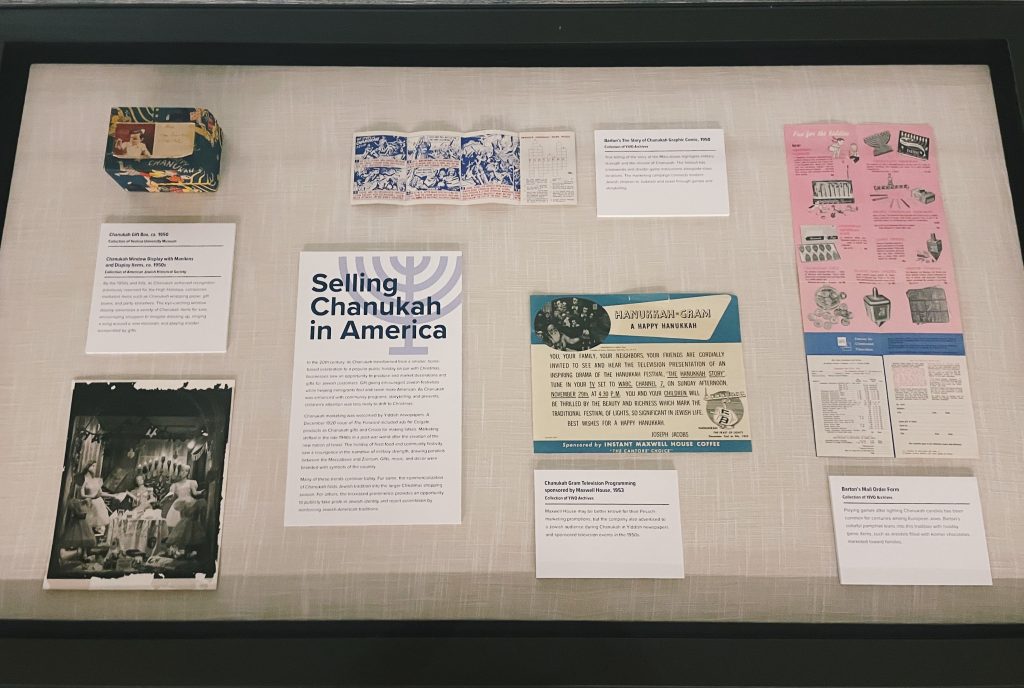By Cassia Kisshauer
Senior Reference Services Librarian, Special Collections
Selling Chanukah in America
As Chanukah transformed in 20th century America from a smaller, home-based festival to a popular public holiday, businesses saw an opportunity to manufacture and market decorations and gifts to Jewish consumers.
In the mid-19th century, new waves of German Jewish immigrants focused on Christmas as a winter holiday, in order to feel and appear more American in a country where it was celebrated as a national tradition, in addition to a religious one. Jewish leaders lamented this change, saying some Jews didn’t know when Chanukah occurred each year.
By the 1920s, however, children and grandchildren of immigrants found that enhancing Chanukah with parties, storytelling, and gifts was a helpful approach. With so much celebration, children’s attention was less likely to drift to Christmas. Gift-giving encouraged Jewish festivities while helping immigrants feel more American. Common gifts included games, toys, and greeting cards with gelt. Recent immigrants from Eastern Europe joined in the public festivities.

As Chanukah became an increasingly prominent holiday, merchandisers saw an opportunity to create demand for decorations and games similar to the Christmas shopping season. Advertisements selling would-be Chanukah gifts and products were welcomed by Yiddish newspapers. The number of ads including the word “חנוכה” grew significantly from single digits in the 1890s to the hundreds in 1920s. A December 1920 issue of The Forward included Chanukah ads for Colgate personal care products as potential gifts [above] as well as for Crisco to make Chanukah latkes [below].

Advertisements changed in a post-war world in the late 1940s, as attention shifted to the new nation of Israel. The holiday of fried food and community festivity saw a resurgence of narratives of militaristic strength in Zionism. Chanukah gifts and décor were branded with symbols of the new nation of Israel, including maps and flags. The equation of Israeli might with Maccabean victory remains popular today.

In Barton’s retelling of the story of the Maccabees [above], the colorful depiction highlights the military strength of a small group along with the religious miracle. The foldout has crosswords and dreidel game instructions alongside shop location information. This marketing campaign offers connections for modern Jews, especially children, to Judaism and historical Israel through gameplaying and storytelling.
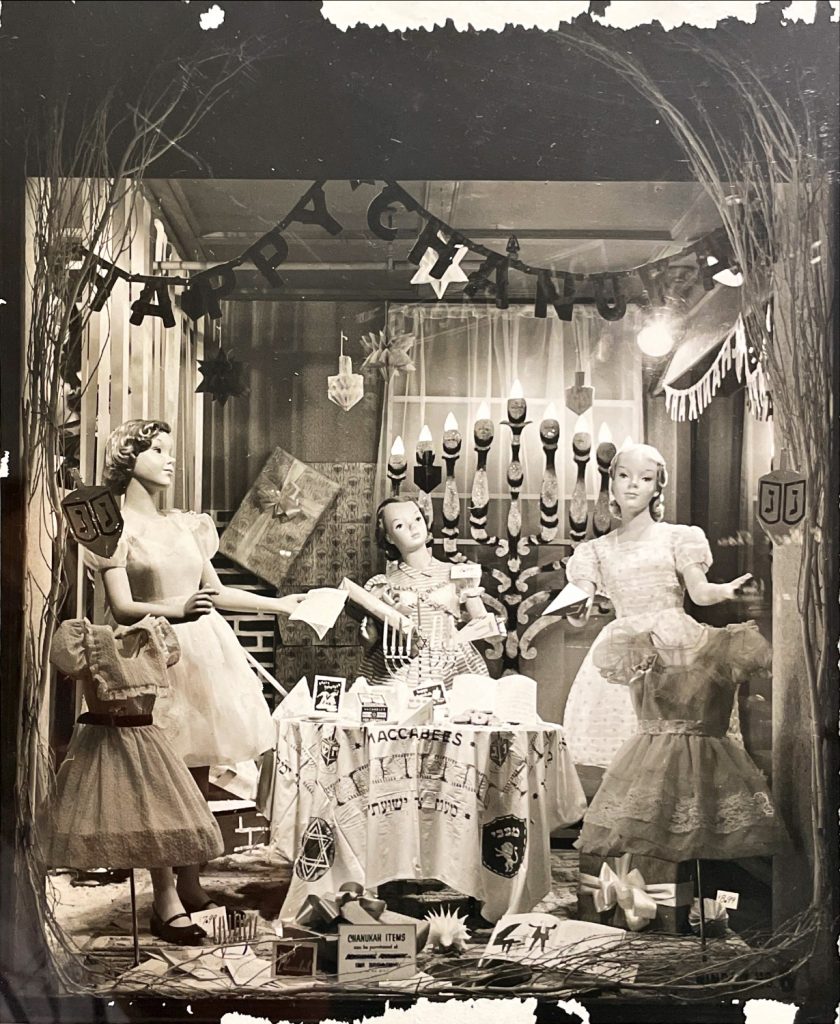
By the 1950s, Chanukah reached popularity within the Jewish community previously reserved for the High Holidays. It became more common to see a menorah next to a Christmas tree or hear a Chanukah song alongside a Christmas carol in a winter holiday program. Companies marketed items such as Chanukah wrapping paper or party streamers, and stores curated eye-catching window displays [above] to encourage shoppers to imagine dressing up in new clothes, singing a song around the menorah, and opening gifts.
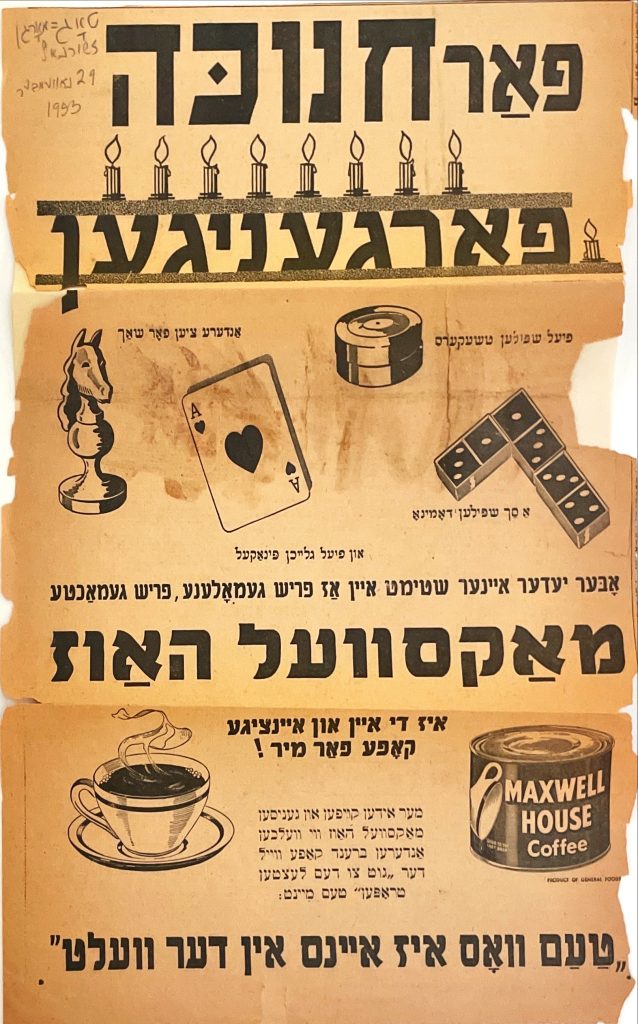
The Christmas-Chanukah connection carried over from community celebrations to the new medium of television. Maxwell House may be known for their Pesach advertising, but the company also marketed Chanukah products in Yiddish newspapers [above] and sponsored television programming for Chanukah in the 1950s [below]. Chanukah became the most familiar Jewish holiday in America in part due to widespread advertising and public events. This advertisement encourages people to gather with family and friends for a dramatic television broadcast.
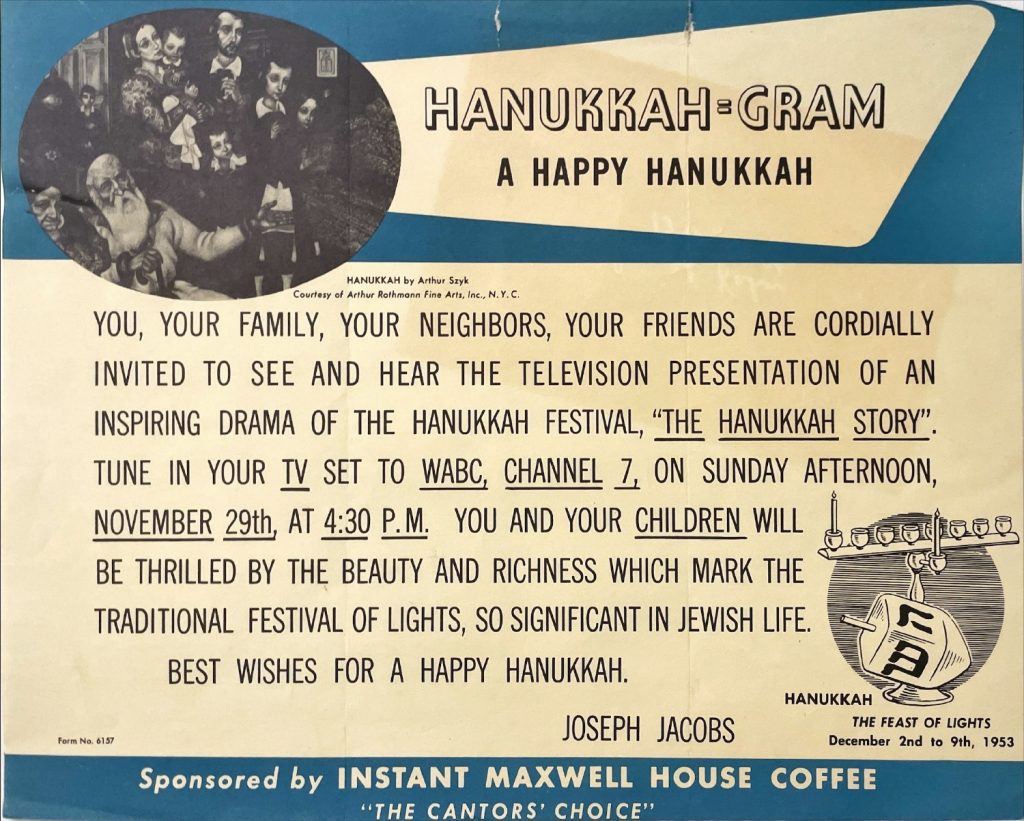
Playing games after lighting Chanukah candles has been common for centuries among European Jewry. Popular games include chess and cards. Maxwell House featured games for holiday enjoyment in their 1953 advertisement, targeting Yiddish-speaking Jewry. Barton’s colorful mail order pamphlet [below] highlights game items filled with kosher chocolates as holiday gifts. Connections to the recently established state of Israel are also seen with the “Made in Israel” menorah.
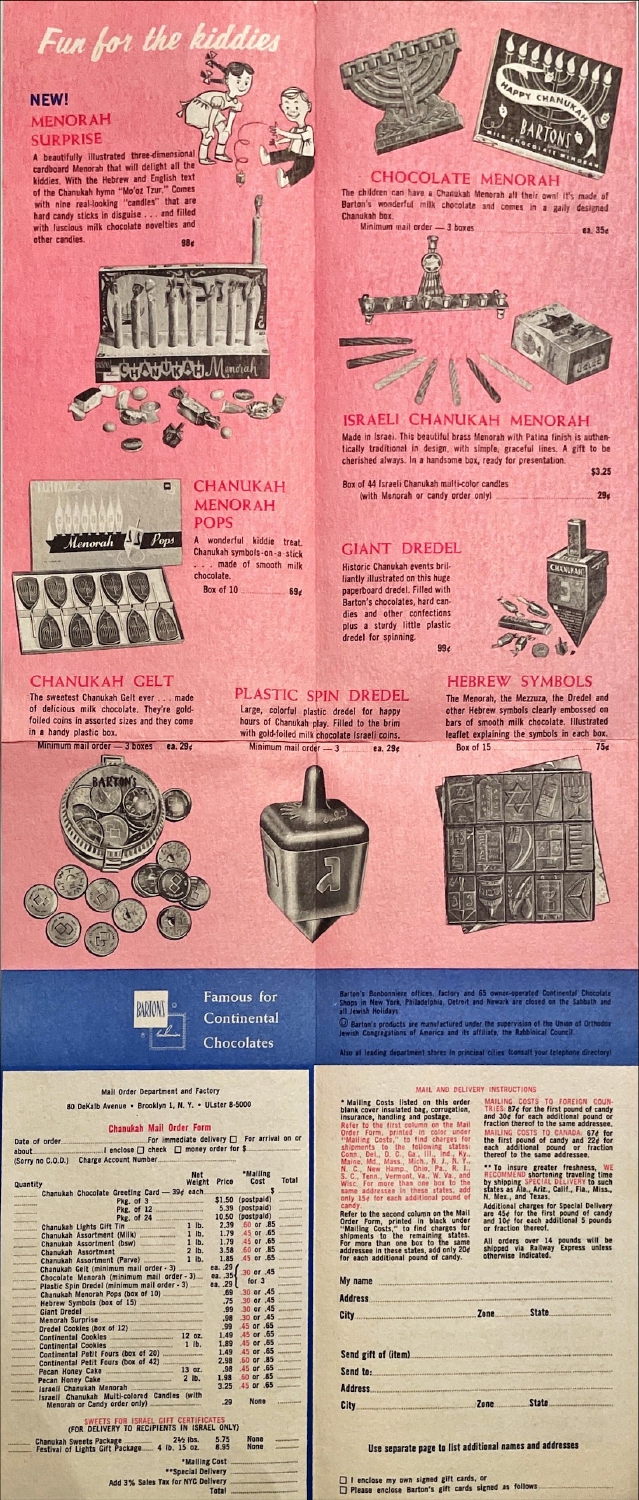
Many of these trends continue today, as selections of Chanukah-themed items and targeted mass marketing continue to increase across the U.S. in stores and online. For some, the commercialization of Chanukah folds a Jewish holiday into the larger Christmas shopping season. For others the increased prominence of the holiday provides an opportunity to publicly take pride in Jewish identity and reject assimilation by taking part in treasured Jewish-American traditions.
Items on Exhibit in the Lillian Goldman Reading Room through December 2023:
Hanukkah Gift Box, ca. 1950. Yeshiva University Museum.
Chanukah Window Display with Manikins and Display Items, ca. 1950s. American Jewish Historical Society.
Barton’s Mail Order Form. RG 131. YIVO Archives.
Barton’s The Story of Chanukah Graphic Comic. RG 131. YIVO Archives.
Hanukkah Gram. RG 131. YIVO Archives.
Other related material at the Center for Jewish History:
Hanukkah in America: A History / Dianne Ashton. Goldstein-Goren Series in American Jewish History. 2013.
The Hanukkah Anthology / Philip Goodman. 1st ed. Philadelphia: Jewish Publication Society of America, 1976.
A Kosher Christmas: ’tis the Season to Be Jewish / Joshua Eli Plaut; Foreword by Jonathan D. Sarna. 2012.
The Wonders of America: Reinventing Jewish Culture 1880-1950 / Jenna Weissman Joselit. 1st ed. New York: Hill and Wang, 1994.


